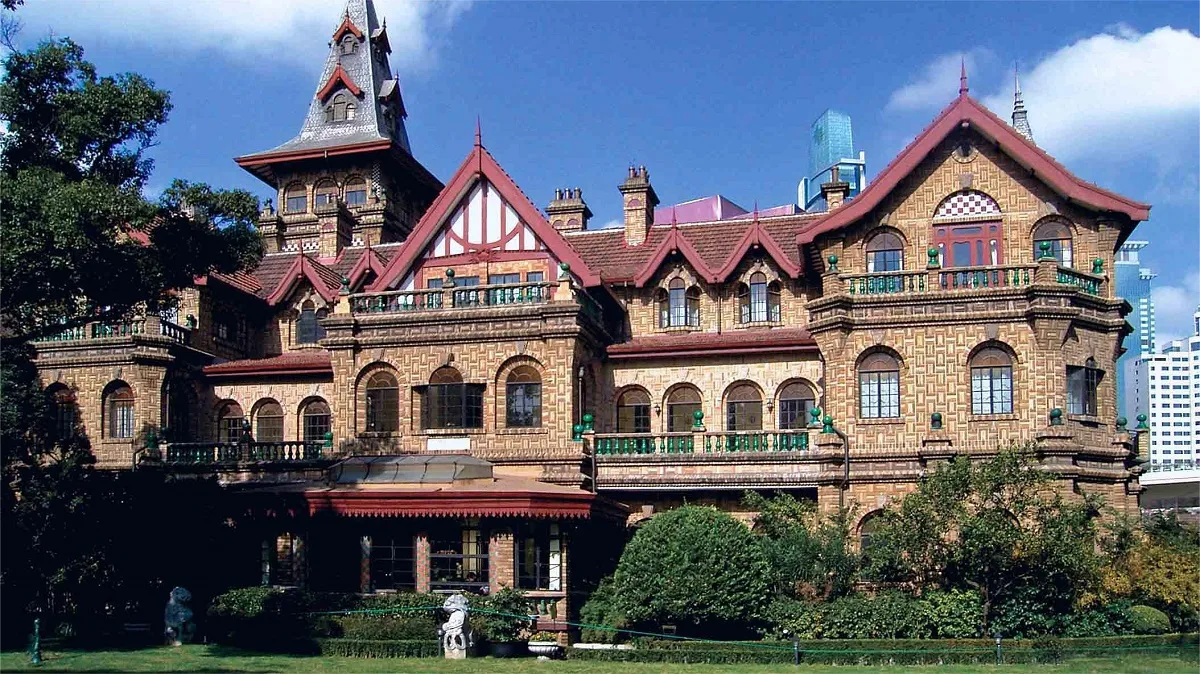Shanghai, often dubbed the “Paris of the East,” is home to a plethora of colonial mansions that reflect the city’s rich history and cultural diversity. These historic residences, dating back to the late 19th and early 20th centuries, serve as tangible reminders of Shanghai’s past as an international hub for trade, commerce, and diplomacy. Among the most renowned colonial mansions in Shanghai, a few stand out for their architectural significance, cultural heritage, and historical importance.
Firstly, the Lilac Garden, located at 849 Huashan Road, stands as one of the finest examples of garden villas blending Eastern and Western architectural styles. This mansion, characterized by its expansive lawn, English countryside villa, winding bridges, and octagonal pavilions, exudes a unique charm. Beyond its architectural prowess, the Lilac Garden is steeped in historical significance, with its former owner adding a legendary touch to its allure.
Another notable colonial mansion is the villa at 100 Wuyi Road, originally purchased by a French missionary and later leased to serve as the Belgian Consulate. This European-style mansion, adorned with exquisite lawns and trees, epitomizes the elegance and sophistication of European architecture. As the Belgian Consulate, it played a crucial role in Shanghai’s diplomatic landscape and stands as a testament to Belgium’s historical presence in the city.
The Mahler Villa, situated at the corner of Huaihai Middle Road and Donghu Road (now No. 7 Donghu Road), is a Scandinavian-style garden mansion built by the British-owned Reckhong Trading Company in 1925. Spanning over 5,000 square meters of land with a garden area of nearly 2,000 square meters, this three-story villa resembles a fairytale castle straight out of a storybook.
Furthermore, 33 The Bund, formerly the British Consulate, holds the distinction of being Shanghai’s earliest consulate building. Completed in 1849, it was the first high-rise structure on the Bund and marked the genesis of international architecture in Shanghai, witnessing the city’s initial stages of development.
The Sassoon Villa, also known as the Rogen Garden, located on Hongqiao Road, was constructed in the 1930s by Victor Sassoon, a British-Jewish real estate tycoon and one of the earliest foreign adventurers in Shanghai. Reflecting a typical English classical countryside villa style, the villa covers an area of around 900 square meters.
Moreover, the Sun Ke Villa, situated at 60 Fanyu Road, is an attraction within the New Territories of the former Shanghai International Settlement. Designed by the renowned architect Laszlo Hudec in 1931, the Spanish-style villa with Baroque architectural elements belonged to Sun Ke, the only son of Dr. Sun Yat-sen and then Minister of Railways. It offers a glimpse into the lifestyle of senior government officials during that era.
Lastly, the residence at 151 Urumqi South Road, built in the 1920s, showcases the Colonial Revival architectural style with its distinctive clapboard exterior walls and classical Tuscan portico. Reflecting the influence of American culture at the time, this mansion stands as a precious heritage site among Shanghai’s modern architectural treasures.


